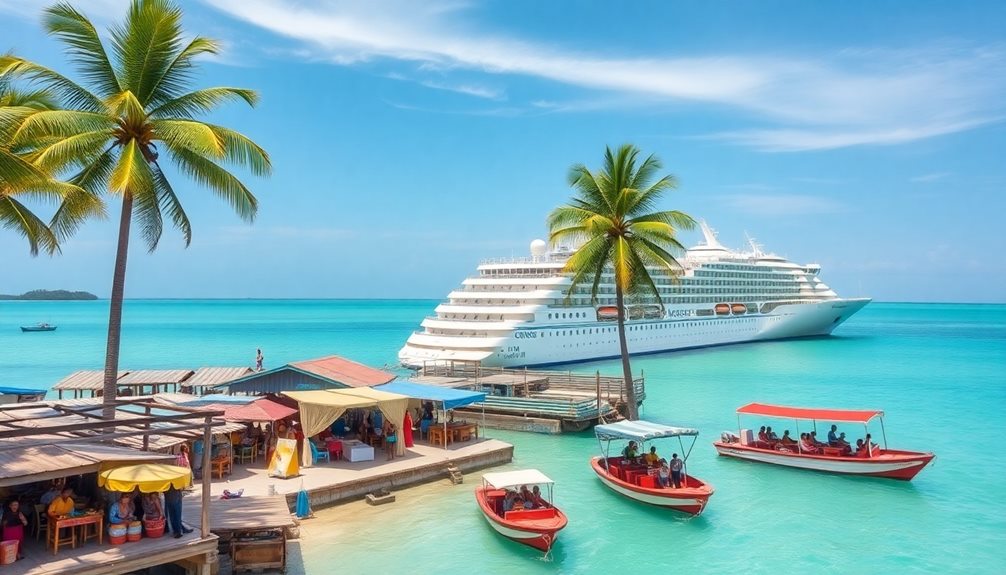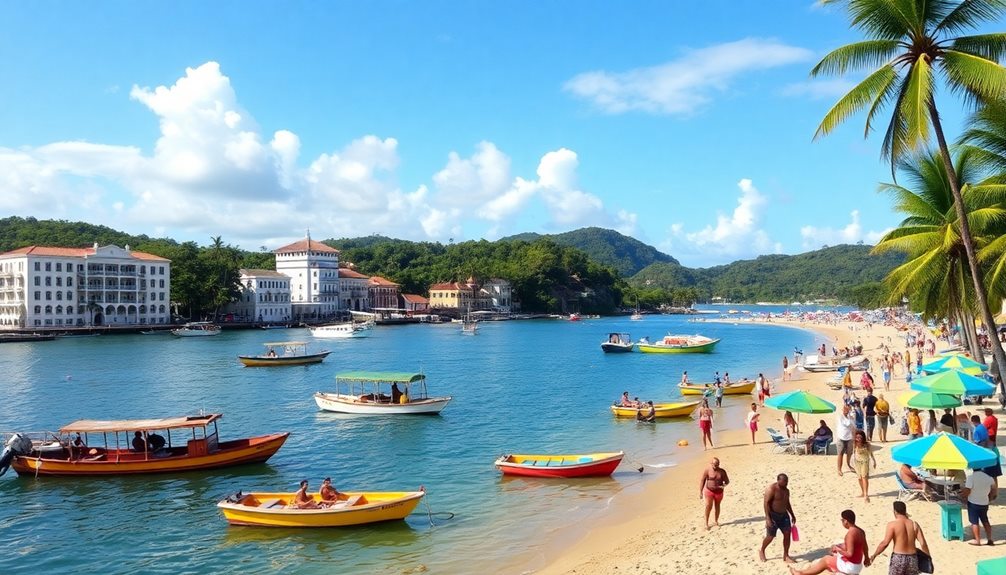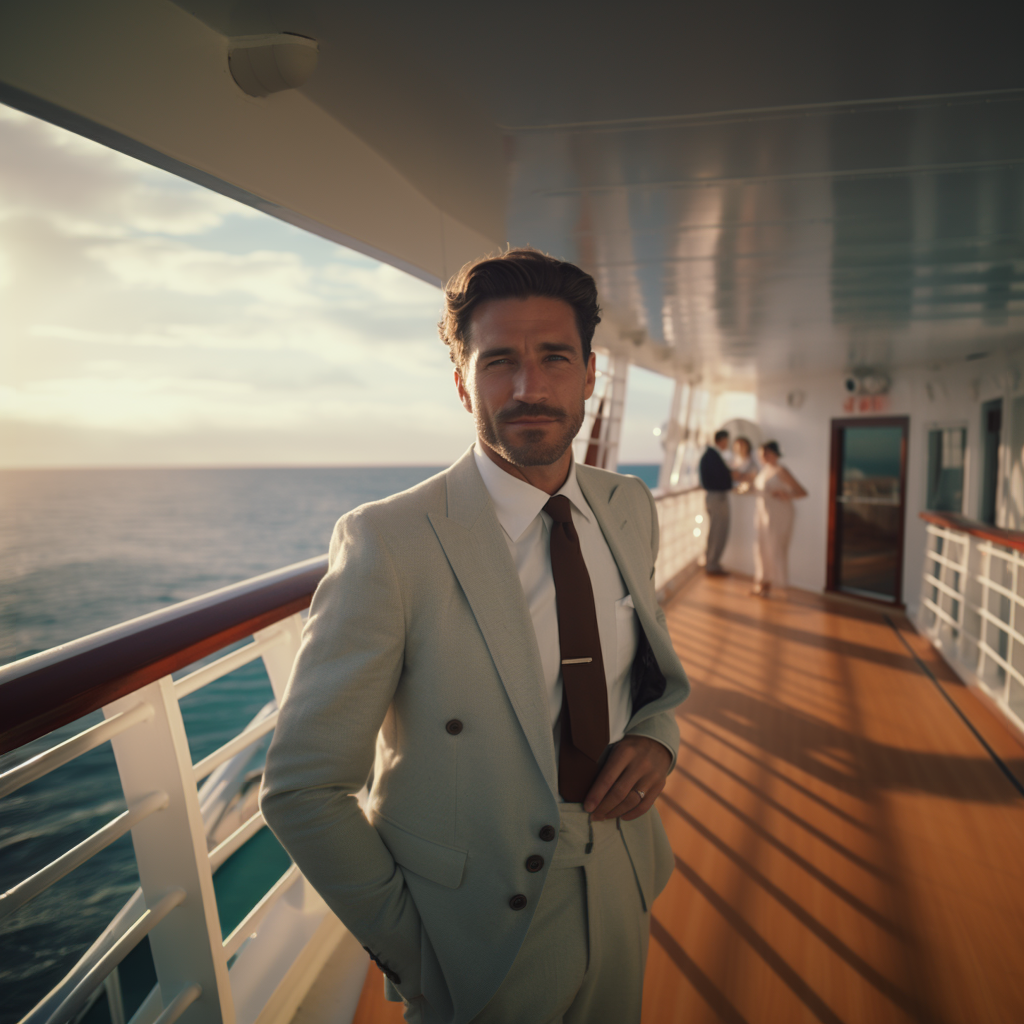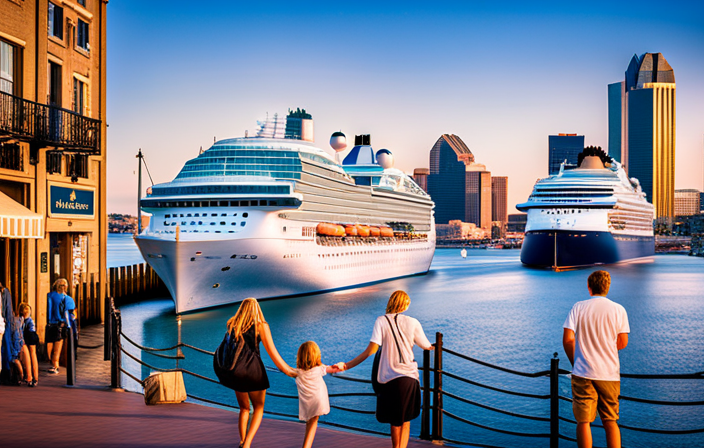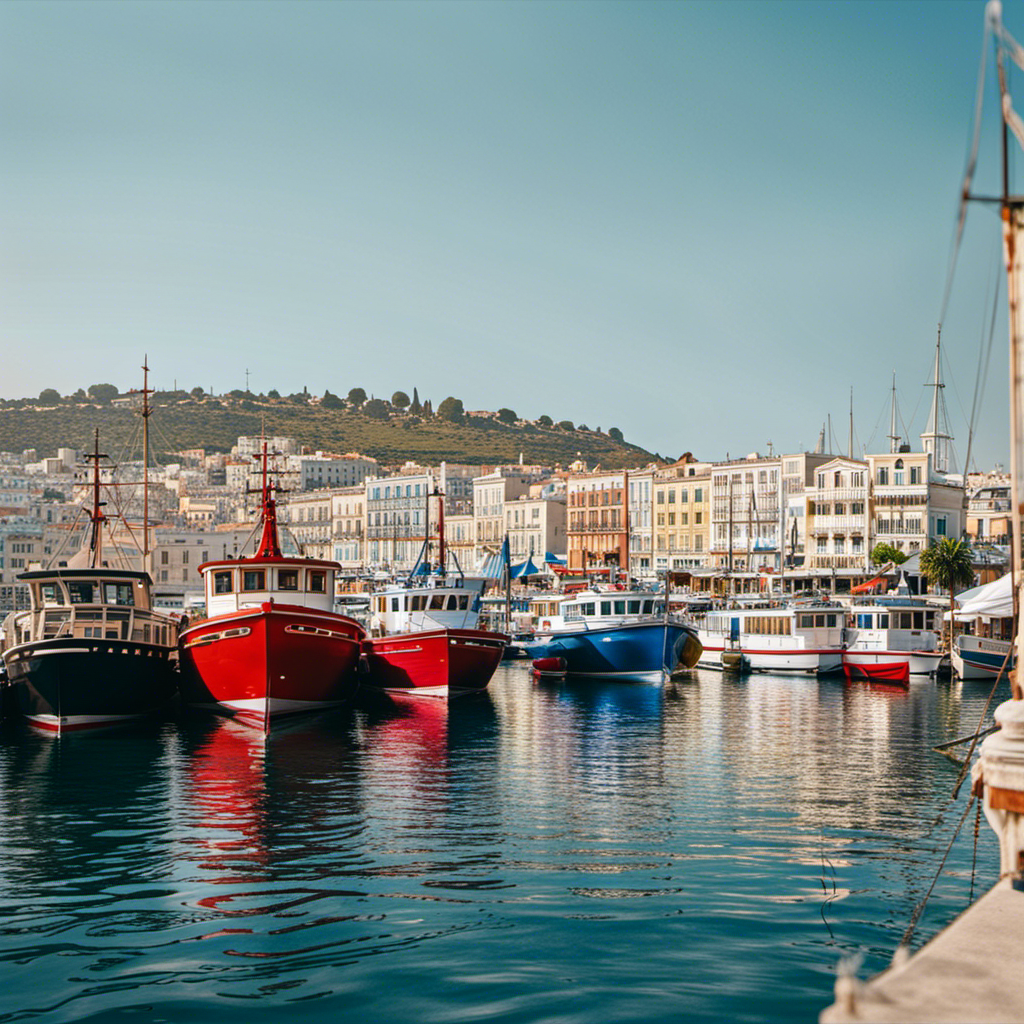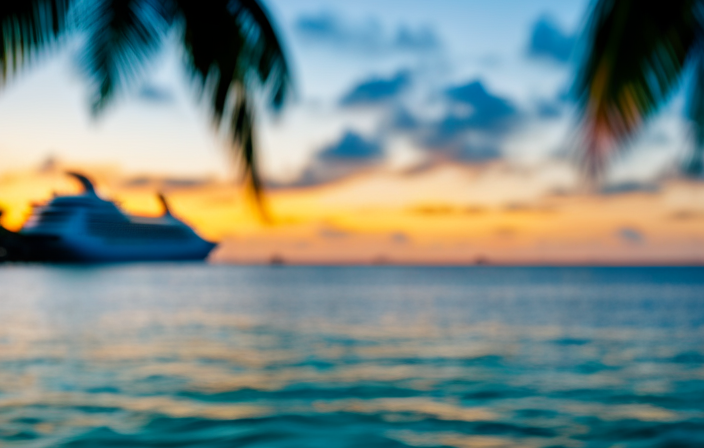When you arrive at Belize's cruise port, you'll need to use tender boats to reach shore, as ships anchor offshore. First, grab a tender access ticket if you're not on a ship-sponsored excursion. Boarding starts about an hour after arrival, and priority goes to excursion passengers. It's best to wait a little after your ship docks to avoid the initial rush. Remember, return trips operate on a first-come, first-served basis, so plan your return accordingly. By understanding the tender process, you'll enhance your overall experience. There's plenty more to discover about making your visit seamless and enjoyable.
Key Takeaways
- Belize operates as a tender port, requiring small boats for transport from ships to shore, approximately two miles away.
- Boarding begins about an hour after the ship's arrival; priority is given to passengers on excursions.
- Non-excursion passengers must obtain a tender access ticket for boarding and return trips operate on a first-come, first-served basis.
- Arriving early at the tender area helps reduce wait times and ensures timely return to the ship.
- Safety briefings are mandatory before boarding, ensuring passengers understand procedures and protocols.
Belize Cruise Port Overview
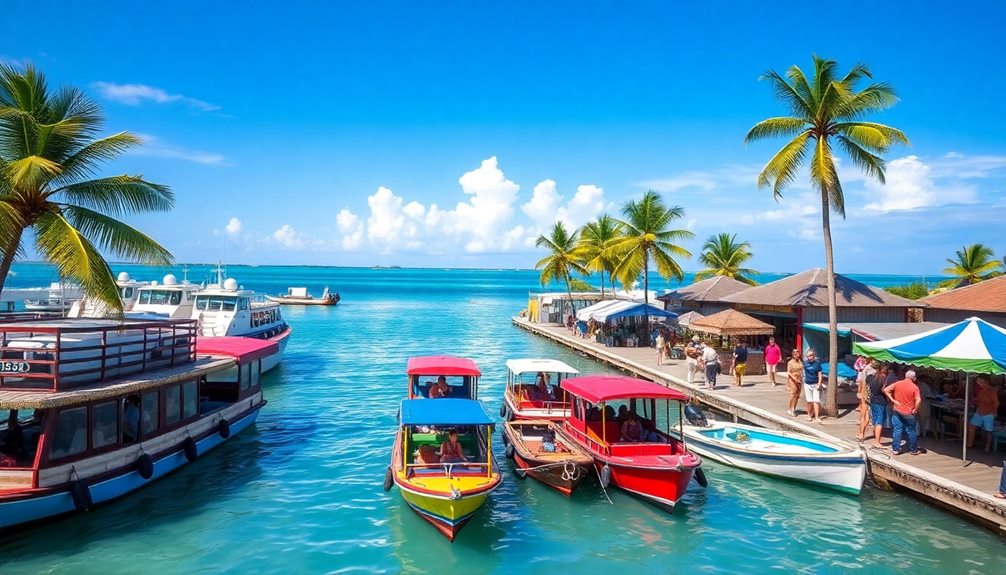
The Belize Cruise Port, nestled in Belize City, serves as a vibrant gateway for travelers exploring this beautiful country.
Located about 70 miles southeast of the Mexican border, the port provides easy access to the incredible sights and experiences Belize has to offer. As a tender port, cruise ships anchor approximately two miles offshore, and you'll need to hop on a tender boat for a short 15-minute ride to reach the port.
Once you arrive, you'll find four docking points for tender boats, ensuring a smooth shift from sea to land.
The nearby Fort Street Tourism Village awaits you with over 30 gift shops, local cuisine restaurants, and lively bars, making it a perfect spot to immerse yourself in Belizean culture.
For your convenience, the port is equipped with free Wi-Fi, clean restrooms, and wheelchair accessibility. You can also feel secure knowing there's a dedicated security office on-site.
If you're planning a visit, consider timing your cruise between early November and late April, when the weather is pleasant and humidity is low, providing an ideal backdrop for your Belize adventure.
Tendering Process Overview
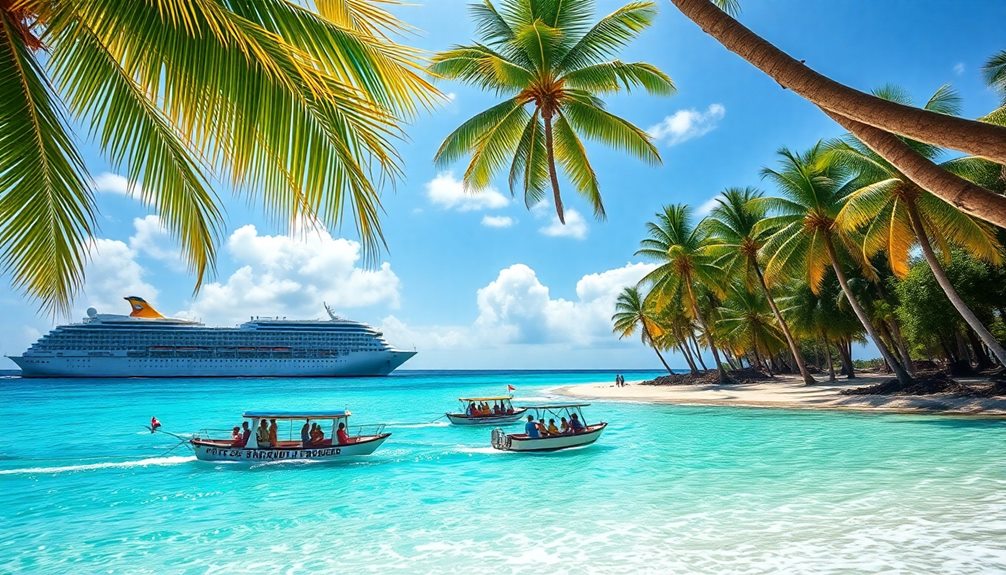
When you arrive in Belize, you'll need to understand the tendering process since cruise ships anchor offshore.
You'll board small boats that take you to the port, and it's important to know the procedures for getting your tender access ticket and managing wait times.
Let's break down the basics of boarding and how to make your experience smooth and enjoyable.
Tendering Basics Explained
Upon arriving at Belize port, you'll experience a unique tendering process that allows you to transfer from your anchored cruise ship to the shore. Since the port lacks suitable docking facilities, you'll board small boats known as tenders for your ride, typically lasting around 15 minutes.
Here's a quick overview of the tendering process:
| Tendering Aspect | Details |
|---|---|
| Priority Boarding | Passengers on ship-sponsored excursions get priority. |
| Tender Access Ticket | Required for those not on excursions. |
| Initial Lines | Lines may form but clear quickly. |
| Return Trips | Operate on a first-come, first-served basis. |
You'll want to keep in mind that safety briefings are conducted before you board the tender. Designated dock areas facilitate efficient loading onto the tenders, making the shift to shore smooth. As you prepare for your tender ride, be sure to return to your cruise ship on time, especially if you aren't part of an excursion group. Enjoy your time at one of the beautiful tender ports!
Boarding Procedures Overview
After getting familiar with the tendering basics, it's important to understand the boarding procedures that make the process efficient and organized.
When you're ready to board the tender boats, you'll need to pay attention to the specific guidelines set by your cruise line. If you're not on a ship-sponsored excursion, make certain to obtain a tender access ticket before boarding begins, which typically starts about an hour after your ship arrives.
Once you have your ticket, head to the designated loading area. Safety briefings are conducted prior to boarding, so listen carefully to guarantee a safe trip.
Remember, priority boarding goes to guests on excursions, so plan accordingly. Tender boats run continuously to the pier, allowing for a smooth shift to the port.
When it's time to return back to the ship, keep in mind that return trips operate on a first-come, first-served basis. To avoid unnecessary delays, monitor the time and don't wait until the last minute to head back.
Wait Times Management Tips
To minimize your wait times at the Belize Cruise Port, timing is key. When your cruise ship docks, you might notice initial lines forming quickly, but don't rush to board a tender immediately.
It's advisable to wait about an hour after the ship's arrival before heading to the tender area. This strategy can greatly reduce your wait times, especially during peak hours.
If you're not on a shore excursion, make sure to pick up a tender access ticket.
Be prepared for potential delays, as the tender back to the ship operates on a first-come, first-served basis. To avoid any last-minute stress, plan your return to the cruise ship well in advance.
Meeting Points and Procedures
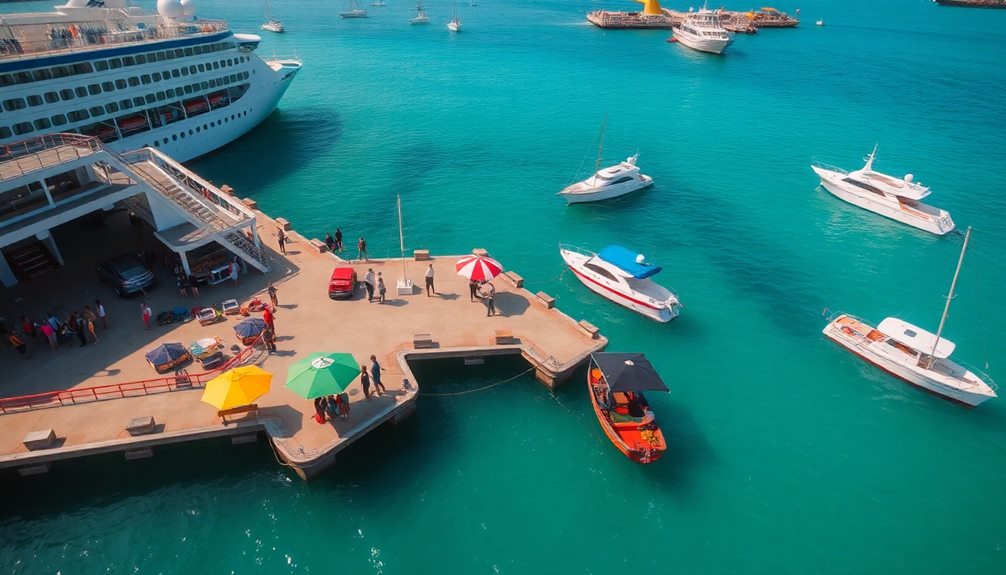
When you're ready to initiate your Belize adventure, knowing where to meet is fundamental. If you've booked excursions, you'll need to gather in the theater before boarding the tender. Your excursion ticket will indicate specific meeting points, so keep an eye out for those details.
For passengers not participating in excursions, obtaining a tender access ticket is essential. You can board the tender once your number is called, but remember that excursion guests get priority during initial boarding, so be patient.
Before you board, safety briefings are conducted to guarantee everyone understands the safety procedures for the tender transfer. It's important to pay attention, as this information could be significant during your journey.
To streamline the boarding process, designated dock areas are established for orderly loading onto tenders. This setup facilitates a smooth initiation process, helping everyone get on board efficiently.
Throughout the waiting period, announcements will be made regarding boarding procedures and tender availability, keeping you informed.
Line Management Strategies
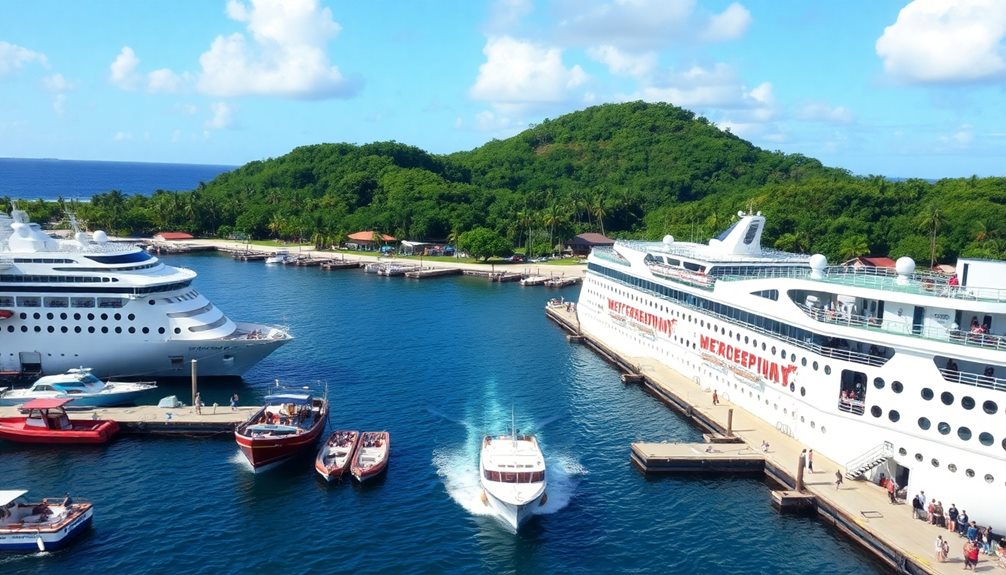
Finding your way through the lines for tender boarding can be a breeze with a few smart strategies.
First, consider waiting about an hour after your ship's arrival before you head for disembarkation. This way, you'll likely avoid the initial rush of excursion passengers, as the lines tend to clear quickly. If you're not on an excursion, make sure to grab a tender access ticket, which will help organize your boarding process.
When it comes to return trips, timing is vital. The tender service operates on a first-come, first-served basis, so returning early is key to avoiding the last tender rush.
If you board early for ship-sponsored excursions, be mindful that general passengers will have to wait longer, which can impact your overall experience.
After the first hour, tender operations become more relaxed, making it easier to board without long waits.
Experiences and Recommendations
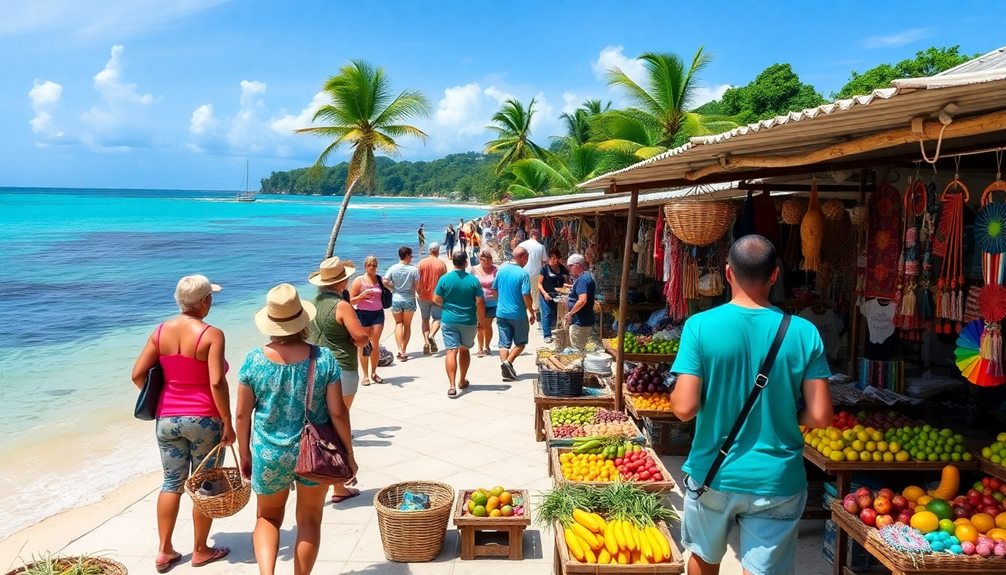
When you arrive in Belize, getting there early can really save you time during the tendering process.
Consider booking excursions that include tender service to make your boarding smoother.
Boarding Tips
To make your boarding experience smoother, arrive early at the tender area to snag a good spot in line. The initial lines often clear quickly after the first hour, so timing is key.
If you want to minimize your wait times, consider booking excursions that include tender service; this often grants you priority boarding, allowing you to get on and off the ship with ease.
Keep a close eye on the clock to avoid missing the last tender back to the ship, as return trips operate on a first-come, first-served basis. If you notice peak periods leading to longer wait times, be patient and wait for the lines to thin out before boarding. This way, you'll enjoy a more relaxed experience.
While you're waiting in open areas, it's wise to stay comfortable. Hydrate and seek shade to avoid the midday sun.
Familiarizing yourself with the ship's location can also ease your mind, so you know exactly where to go once you're back on solid ground.
Timing Strategies
Timing your tender experience can make all the difference in your day at port. If you arrive early at the tender boarding area, you'll likely face shorter wait times, as initial lines tend to clear quickly after the first hour.
If you've pre-booked excursions, you'll enjoy priority boarding, allowing you to disembark before general passengers, which is something you need to know.
As you plan your day, keep track of time. Make certain you return to the ship early to avoid missing the last tender, as return trips operate on a first-come, first-served basis. You don't want to be stuck going back and forth between the ship and port.
It's also wise to wear comfortable shoes and stay hydrated while waiting in open areas, especially since the heat can become uncomfortable.
To enhance your experience, consider booking excursions that include tender service; these often streamline the boarding process and reduce wait times.
Common Concerns and Solutions
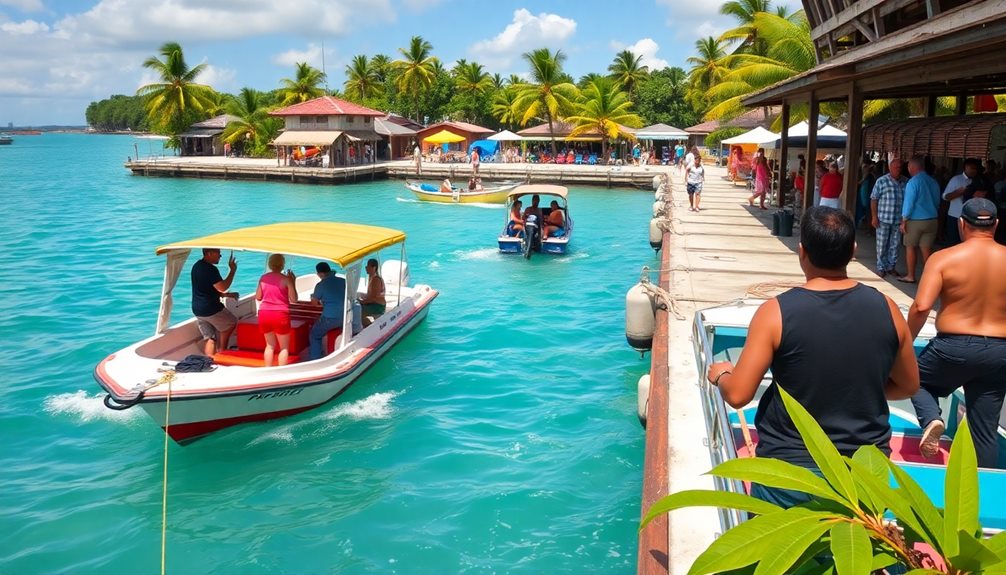
Maneuvering the tendering process in Belize can raise several concerns for passengers, but understanding the solutions can make your experience smoother.
Seasickness is a common issue, but you can reduce discomfort by choosing seats in the middle or towards the front of the tender. This positioning helps you manage the ride's motion better. Additionally, just as air quality notably impacts health, ensuring your comfort during the tendering process is vital for an enjoyable experience, especially for those prone to seasickness improving overall indoor air quality.
When it comes to safety measures, rest assured that the crew is trained to handle inclement weather. They'll keep you informed about any potential delays or changes in the tendering process, ensuring your safety is a top priority.
If you have mobility issues, note that while assistance is available, staff can't lift guests or equipment. Additionally, most tenders lack roll-on capacity for mobility scooters, so planning ahead is essential.
Lastly, take advantage of pre-cruise materials that provide detailed information about the tendering process. These resources prepare you for boarding and enhance your overall port experience.
Don't forget that feedback mechanisms are available for you to report your tendering experiences; your insights contribute to ongoing improvements for future travelers.
Accessibility Considerations
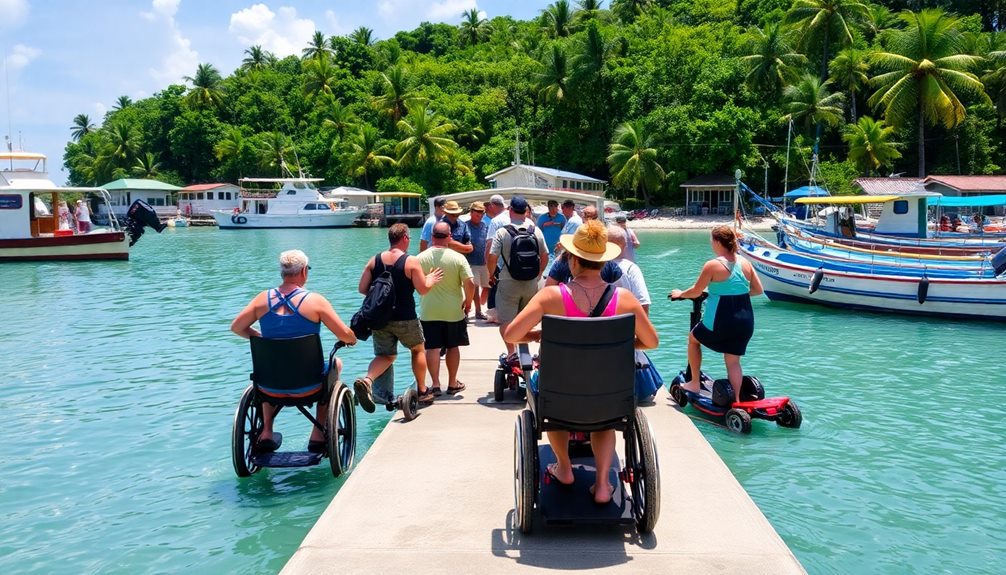
Maneuvering the Belize Cruise Port can be particularly challenging for passengers with mobility issues, especially since most tenders lack roll-on capacity for mobility scooters. This limitation can make transportation to and from the ship difficult.
While Celebrity Cruises offers boarding assistance for disabled guests, their staff can't lift guests or equipment, so it's crucial to plan accordingly.
If you're using a wheelchair, consider the Magic Carpet on the Edge series, which greatly enhances accessibility. It provides a smoother boarding experience compared to traditional tenders.
Familiarizing yourself with the port layout and available transportation options before your cruise can help streamline your visit.
Safety protocols are also in place during inclement weather, ensuring everyone's well-being, including those with mobility challenges.
Always stay informed about changes or updates regarding boarding procedures, as these can impact your experience.
Conclusion
As you set sail into the vibrant waters of Belize, remember the tender process is your bridge to exploration. Think of it as a dance, where each step leads you closer to the rhythm of this beautiful destination. Stay aware of meeting points and embrace the flow of line management, ensuring a smooth journey. With a little preparation, you'll wade through concerns like a seasoned sailor, ready to plunge into unforgettable experiences waiting just beyond the shore.
Alfons is the visionary leader and driving force behind Voyager Info’s success. As the Editor in Chief, he brings a wealth of experience and an unwavering passion for travel to the helm of our cruise-centric platform.
With a lifelong fascination for exploring new horizons, Alfons discovered his love for the ocean and cruising at a young age. From sailing across pristine Caribbean waters to embarking on daring expeditions to far-flung destinations, he has amassed a treasure trove of first-hand experiences in the world of cruising.

